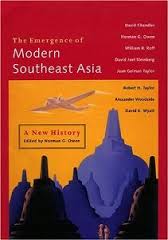Obviously, not all of the information contained in the various blog postings of the Indochina blog and the South East Asia blog come from personal knowledge or observation. When travelling we carry a small travel library, to which we kepe on adding, and we do read up on the area prior to departure. Below some of the books – 1 to 10 from the first Indochina blog and 11 to 16 from the SE Asia trip – and some of my views on them.
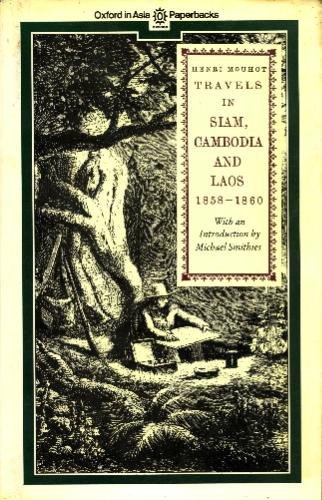 1 – Henry Mouhot’s “Travels in Siam, Cambodia and Laos, 1858-1861” describes the Frenchman’s extensive exploration in Indochina, including his “re-discovering”of Angkor Wat. A great read, very broad in subjects covered – although some of his descriptions, of nature, or of individual temples in Angkor Wat, are rather tedious. He aims to record observations for posterity, that’s why. Yet, he is realistic enough to recognize that more specialized scholars may overturn his conclusions with time, which indeed has happened on various occasions. Which does in no way diminish the entertainment value of this travelogue, of a semi-scientific adventurer who covered lots of ground, and, unfortunately, ultimately did not survive his adventures, dying from what was most likely malaria in Luang Prabang in Laos.
1 – Henry Mouhot’s “Travels in Siam, Cambodia and Laos, 1858-1861” describes the Frenchman’s extensive exploration in Indochina, including his “re-discovering”of Angkor Wat. A great read, very broad in subjects covered – although some of his descriptions, of nature, or of individual temples in Angkor Wat, are rather tedious. He aims to record observations for posterity, that’s why. Yet, he is realistic enough to recognize that more specialized scholars may overturn his conclusions with time, which indeed has happened on various occasions. Which does in no way diminish the entertainment value of this travelogue, of a semi-scientific adventurer who covered lots of ground, and, unfortunately, ultimately did not survive his adventures, dying from what was most likely malaria in Luang Prabang in Laos.
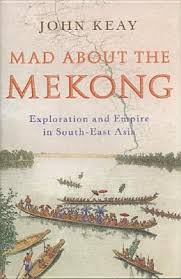 2 – The adventures of another Frenchman, Francois Garnier, and his Mekong expedition of 1865-1867, is re-told by John Keay in “Mad about Mekong”, where he retraces (some of) the steps of the expedition. Keay is a gifted writer of popular history, combined with his own travel experiences – highly recommended. Unless, of course, you want the real thing, the original reports of the expedition, not only Francois Garnier’s two volumes, but also those of other members, have been published by White Lotus in Bangkok.
2 – The adventures of another Frenchman, Francois Garnier, and his Mekong expedition of 1865-1867, is re-told by John Keay in “Mad about Mekong”, where he retraces (some of) the steps of the expedition. Keay is a gifted writer of popular history, combined with his own travel experiences – highly recommended. Unless, of course, you want the real thing, the original reports of the expedition, not only Francois Garnier’s two volumes, but also those of other members, have been published by White Lotus in Bangkok.
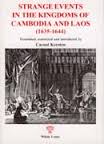 3 – As for White Lotus, in the Indochina blog I mentioned Carool Kersten’s short study, and reprint in English, of the Dutch VOC experiences in Cambodia, including their expedition to Wincjen – Vientianne – in 1642: “Strange Events in the Kingdoms of Cambodia and Laos, 1634-1644”.
3 – As for White Lotus, in the Indochina blog I mentioned Carool Kersten’s short study, and reprint in English, of the Dutch VOC experiences in Cambodia, including their expedition to Wincjen – Vientianne – in 1642: “Strange Events in the Kingdoms of Cambodia and Laos, 1634-1644”.
 4 – A more recent book is “Cambodia Year Zero, Road to Khmer Rouge Killing Machine”, an English translation of Francois Ponchaud’s 1977 account of the Khmer Rouge capture of Phnom Penh, and the testimonies he collected subsequently from Cambodian refugees who escaped the Democratic Kampuchea. A spine-chilling book, no fun to read, by someone who lived in Cambodia in the 10 years before the Khmer Rouge victory, initially believed in the Khmer Rouge, but comes to the conclusion that he was wrong. He describes the methodical approach to genocide, exterminating everything that was associated with the old regime, immediately after the take-over (well before the Khmer Rouge started purging their own ranks).
4 – A more recent book is “Cambodia Year Zero, Road to Khmer Rouge Killing Machine”, an English translation of Francois Ponchaud’s 1977 account of the Khmer Rouge capture of Phnom Penh, and the testimonies he collected subsequently from Cambodian refugees who escaped the Democratic Kampuchea. A spine-chilling book, no fun to read, by someone who lived in Cambodia in the 10 years before the Khmer Rouge victory, initially believed in the Khmer Rouge, but comes to the conclusion that he was wrong. He describes the methodical approach to genocide, exterminating everything that was associated with the old regime, immediately after the take-over (well before the Khmer Rouge started purging their own ranks).
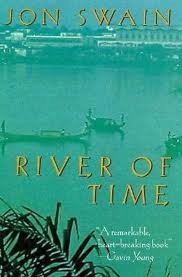 5 – Jon Swain, who wrote “Rivers of Time: A Memoir of Vietnam”, also lived through the Khmer Rouge take-over, and spent a long time in Indochina as foreign correspondent, I think for AFP. He writes a curiously beautiful prose about, well, the war in all its atrocities. If you need to read about this war, try this one.
5 – Jon Swain, who wrote “Rivers of Time: A Memoir of Vietnam”, also lived through the Khmer Rouge take-over, and spent a long time in Indochina as foreign correspondent, I think for AFP. He writes a curiously beautiful prose about, well, the war in all its atrocities. If you need to read about this war, try this one.
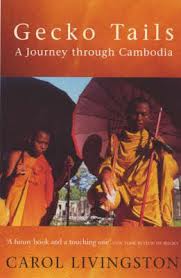 6 – Carol Livingstone was not a foreign correspondent, but may have wanted to be one. She wrote “Gecko Tails. A Journey through Cambodia” in 1996, describing her time in Cambodia in the early 90s, starting just before the UN overseen elections of 1991. Sometimes funny, mostly just a personal travelogue, not very interesting for an outsider, also not very analytical – but she doesn’t claim to want to be analytical -, she nevertheless has a few points to make. Being a fairly normal person, she actually conveys the fear with which people, Cambodians and foreigners alike, lived in these uncertain times, and has some poignant examples of where it went wrong.
6 – Carol Livingstone was not a foreign correspondent, but may have wanted to be one. She wrote “Gecko Tails. A Journey through Cambodia” in 1996, describing her time in Cambodia in the early 90s, starting just before the UN overseen elections of 1991. Sometimes funny, mostly just a personal travelogue, not very interesting for an outsider, also not very analytical – but she doesn’t claim to want to be analytical -, she nevertheless has a few points to make. Being a fairly normal person, she actually conveys the fear with which people, Cambodians and foreigners alike, lived in these uncertain times, and has some poignant examples of where it went wrong.
 7. The most-quoted travel book of this region is Norman Lewis’ “A Dragon Apparent”, a record of his journey through Vietnam, Laos and Cambodia in 1950, “in the twilight of the French colonial regime”. Brilliant, interesting, entertaining, funny, and an easy read, but obviously outdated – but we hadn’t expected anything else, of course, 60 years later, and it certainly does not reduce the entertainment value of this book. And, in some cases not much has changed since he traveled around, see the blog post on Kon Tum.
7. The most-quoted travel book of this region is Norman Lewis’ “A Dragon Apparent”, a record of his journey through Vietnam, Laos and Cambodia in 1950, “in the twilight of the French colonial regime”. Brilliant, interesting, entertaining, funny, and an easy read, but obviously outdated – but we hadn’t expected anything else, of course, 60 years later, and it certainly does not reduce the entertainment value of this book. And, in some cases not much has changed since he traveled around, see the blog post on Kon Tum.
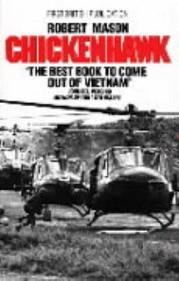 8. Another Vietnam war memory is a book I read 25 years ago (whilst working with Huey helicopters) about a Huey helicopter pilot and his one year stint in Central Vietnam in 1966 or so. The book is called “Chickenhawk”, written by Robert Mason (the pilot himself). I found it back here, read it again, and am still impressed, even though there is a lot of technical jargon.
8. Another Vietnam war memory is a book I read 25 years ago (whilst working with Huey helicopters) about a Huey helicopter pilot and his one year stint in Central Vietnam in 1966 or so. The book is called “Chickenhawk”, written by Robert Mason (the pilot himself). I found it back here, read it again, and am still impressed, even though there is a lot of technical jargon.
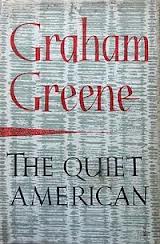 9. Next is Graham Greene’s classic novel “The Quiet American”, published in 1955, and written mostly in Saigon during the Vietnamese – Vietming – fight for independence from the French. Its description of the war is vivid, and eerily similar to what Americans described 10-20-30 years later, and its comments on American involvement are eerily predictive.
9. Next is Graham Greene’s classic novel “The Quiet American”, published in 1955, and written mostly in Saigon during the Vietnamese – Vietming – fight for independence from the French. Its description of the war is vivid, and eerily similar to what Americans described 10-20-30 years later, and its comments on American involvement are eerily predictive.
 10. And the last book, for the time being, is “Tiger Balm”, another travel account of Laos, Cambodia and Indochina, written by Lucretia Stewart, in 1992. Hailed as the next Norman Lewis, the book initially didn’t hook me, due to a rather boring and highly personal first chapter on Vientiane, but the later chapters are in fact very entertaining, and spot on, ie. recognisable for someone who has just been there, even though she writes almost 20 years earlier, before the big influx of tourists.
10. And the last book, for the time being, is “Tiger Balm”, another travel account of Laos, Cambodia and Indochina, written by Lucretia Stewart, in 1992. Hailed as the next Norman Lewis, the book initially didn’t hook me, due to a rather boring and highly personal first chapter on Vientiane, but the later chapters are in fact very entertaining, and spot on, ie. recognisable for someone who has just been there, even though she writes almost 20 years earlier, before the big influx of tourists.
And the second batch, related to the SE Asia blog:
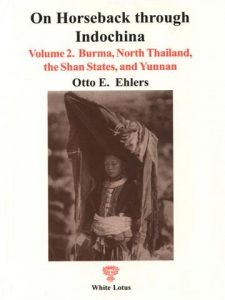 11. Otto Ehlers was a rich, 19th Century German socialite whose castle burnt down. So he decided to go and travel, first to German East Africa, and then to India and South East Asia, and further to the Pacific. He wrote several popular travelogues, in German, of which the second part of his Indian travels, and the two volumes of his South East Asian journey, have been translated in English. “On Horseback through Indochina” (originally 1894, English translation 2002) is the story of a well-connected, somewhat eccentric traveler whose main purpose in life seems to be to move from one place to another, preferably along paths not earlier covered by Western explorers, essentially for fun, and without much claim to scientific research like so many others of his time. “A man of means and leisure”, although I don’t think this quote is actually from Mr Ehlers.
11. Otto Ehlers was a rich, 19th Century German socialite whose castle burnt down. So he decided to go and travel, first to German East Africa, and then to India and South East Asia, and further to the Pacific. He wrote several popular travelogues, in German, of which the second part of his Indian travels, and the two volumes of his South East Asian journey, have been translated in English. “On Horseback through Indochina” (originally 1894, English translation 2002) is the story of a well-connected, somewhat eccentric traveler whose main purpose in life seems to be to move from one place to another, preferably along paths not earlier covered by Western explorers, essentially for fun, and without much claim to scientific research like so many others of his time. “A man of means and leisure”, although I don’t think this quote is actually from Mr Ehlers.
The first of three volumes describes his trip from eastern India, Assam and Nagaland, through Burma, sidestepping to the Andaman and Nicobar Islands, to Rangoon (present-day Yangon), essentially moving from introduction to introduction, and participating in many an adventure, from elephant hunt to military expedition. Quite different is the travel style of the second volume, through Siam (now Thailand) and the Shan States (a collection of minor kingdoms in Northern Burma and parts of Laos) to Tonkin (now Vietnam), a journey full of hardships and dangers which Mr. Ehlers completes with a small team, half of which is in fact actually sabotaging him, through virtually uncharted, bandit- and tiger-infested territory. Originally he had wanted to enter Yunnan, but was refused by the Chinese, so he diverted to what is now Northern Vietnam, and from there traveled down the Red River to Hanoi (and on by boat to Saigon, Singapore and Bangkok). His assessment of French colonialism (as opposed to the British) is rather critical, as is his opinion of the Vietnamese that opportunistically serve the French, but will never defend them. Great set of books, entertaining.
 12. Someone who did manage to spent significant time in Yunnan, although somewhat later, was Peter Goullart, A Russian who fled the revolution and ended up in Shanghai, where he worked for an organization financing cooperatives. He managed to get himself posted in Yunnan, where he dived into local society and customs as far as possible, as far as an outsider was allowed to. Several years later he wrote a book about it, “Forgotten Kingdom, Nine Years in Yunnan, 1939-1948” (1955). Roughly set up along thematic chapters, Mr Goullart sketches a general picture of his live in Lijiang, his sources of information through the local shops and bars, his travels to ever more outlying villages, his contacts with many of the different population groups. And the increasing uncertainty at the end of his tenure, with the approach of the communist forces, that eventually brings his time in Yunnan to an end. A very entertaining book, with lots of early insights in this exciting province of China.
12. Someone who did manage to spent significant time in Yunnan, although somewhat later, was Peter Goullart, A Russian who fled the revolution and ended up in Shanghai, where he worked for an organization financing cooperatives. He managed to get himself posted in Yunnan, where he dived into local society and customs as far as possible, as far as an outsider was allowed to. Several years later he wrote a book about it, “Forgotten Kingdom, Nine Years in Yunnan, 1939-1948” (1955). Roughly set up along thematic chapters, Mr Goullart sketches a general picture of his live in Lijiang, his sources of information through the local shops and bars, his travels to ever more outlying villages, his contacts with many of the different population groups. And the increasing uncertainty at the end of his tenure, with the approach of the communist forces, that eventually brings his time in Yunnan to an end. A very entertaining book, with lots of early insights in this exciting province of China.
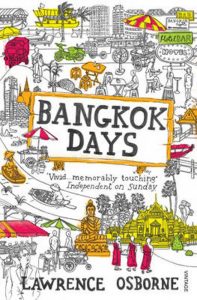 13. Lawrence Osborne lived in Bangkok for several years – it is nowhere clear how long exactly – and wrote “Bangkok Days” (2009) about his experiences. His is an entertaining book, about a number of characters he meets during his first year, some of whom he encounters later again, about the neighbourhoods of the city, especially some of the less touristic ones, about some of the Thai peculiarities, whether the attitude towards casual paid sex to move ahead in life, or the ‘third gender’, the ladyboys, but mostly about a way of life of the foreigner in Bangkok the one who has established himself (always a ‘him’, never a ‘her’) in principle for the rest of his life. Perhaps his greatest achievement with this book is the way Mr Osborne actually shows the various ways of looking upon those people: yes, in a way they are despicable, but yes, from their point of view their ways are perfectly understandable, and pretty harmless. Lightheartedly written, yet with a sympathetic way of making a few points along the way. Good book, for on the road in Thailand.
13. Lawrence Osborne lived in Bangkok for several years – it is nowhere clear how long exactly – and wrote “Bangkok Days” (2009) about his experiences. His is an entertaining book, about a number of characters he meets during his first year, some of whom he encounters later again, about the neighbourhoods of the city, especially some of the less touristic ones, about some of the Thai peculiarities, whether the attitude towards casual paid sex to move ahead in life, or the ‘third gender’, the ladyboys, but mostly about a way of life of the foreigner in Bangkok the one who has established himself (always a ‘him’, never a ‘her’) in principle for the rest of his life. Perhaps his greatest achievement with this book is the way Mr Osborne actually shows the various ways of looking upon those people: yes, in a way they are despicable, but yes, from their point of view their ways are perfectly understandable, and pretty harmless. Lightheartedly written, yet with a sympathetic way of making a few points along the way. Good book, for on the road in Thailand.
 14. “One Foot in Laos” (2001), by perpetual traveler Dervla Murphy, is a great introduction into the Lao way of life, as it was around the time the country opened up to the international world at the very end of the 20th Ms Murphy, well in her 60s by then, traveled on her own, old-style backpacking and attempting to walk the country – frequently being thwarted by semi-official villagers, who forbid her to continue, for some or another vague security reason. But not thwarted by an unfortunate incident whereby she hurts her foot; as this makes walking difficult, she just gets herself a bicycle! She is a keen observer, and describes well a country that is on the cross roads between old, tested ways and a new, uncertain future. For my taste Ms Murphy is a bit too concerned about everything new, and a bit too uncritical about the old, tested ways – there are definitely risks associated with advancement and development, and some things will go wrong, but at the same time no society is immune to outside influences, many of whom carry the promise of improved living standards. Having said so, I also have come to appreciate Lao culture as fairly unique, and I can see that not every change is necessarily better for the future; yet, it is unstoppable, live with it! But in between Ms Murphy’s outspoken views is a very entertaining travelogue, of a determined and experienced traveler, who knows to quickly pick out the idiosyncrasies of a society, a community, and describe them vividly and with humour.
14. “One Foot in Laos” (2001), by perpetual traveler Dervla Murphy, is a great introduction into the Lao way of life, as it was around the time the country opened up to the international world at the very end of the 20th Ms Murphy, well in her 60s by then, traveled on her own, old-style backpacking and attempting to walk the country – frequently being thwarted by semi-official villagers, who forbid her to continue, for some or another vague security reason. But not thwarted by an unfortunate incident whereby she hurts her foot; as this makes walking difficult, she just gets herself a bicycle! She is a keen observer, and describes well a country that is on the cross roads between old, tested ways and a new, uncertain future. For my taste Ms Murphy is a bit too concerned about everything new, and a bit too uncritical about the old, tested ways – there are definitely risks associated with advancement and development, and some things will go wrong, but at the same time no society is immune to outside influences, many of whom carry the promise of improved living standards. Having said so, I also have come to appreciate Lao culture as fairly unique, and I can see that not every change is necessarily better for the future; yet, it is unstoppable, live with it! But in between Ms Murphy’s outspoken views is a very entertaining travelogue, of a determined and experienced traveler, who knows to quickly pick out the idiosyncrasies of a society, a community, and describe them vividly and with humour.
 15. “Sunsets, Bulldozers and Elephants: Twelve Years in Laos” (2004) got the subtitle “The Stories I Never Told”. Howard Lewin would have done better to keep it that way. There is no doubt that he has had a life-changing experience working all that time for an American voluntary development organization in Laos, especially during the years of conflict, but he is not very good at telling his story. Far too much detail, far too many names of totally uninteresting people, and far too often events and situations that are not really fascinating for anybody else but for Mr. Lewin himself. On top of that Mr. Lewin comes with the conviction that the American way is the natural way forward, the only one really, for everybody, and that Laotians are dying to be taken up on the great wave of development – here he is quite the opposite of Ms Murphy, above, and perhaps a little naïve.
15. “Sunsets, Bulldozers and Elephants: Twelve Years in Laos” (2004) got the subtitle “The Stories I Never Told”. Howard Lewin would have done better to keep it that way. There is no doubt that he has had a life-changing experience working all that time for an American voluntary development organization in Laos, especially during the years of conflict, but he is not very good at telling his story. Far too much detail, far too many names of totally uninteresting people, and far too often events and situations that are not really fascinating for anybody else but for Mr. Lewin himself. On top of that Mr. Lewin comes with the conviction that the American way is the natural way forward, the only one really, for everybody, and that Laotians are dying to be taken up on the great wave of development – here he is quite the opposite of Ms Murphy, above, and perhaps a little naïve.
I lasted 80 pages, then I put the book away. Quite possibly it gets more exciting afterwards, but Mr. Lewin had lost me on the way.
 16. “Ant Egg Soup” (2004) was written self-proclaimed food-tourist Natacha du Pont de Bie, who journeys for several months through Laos to discover its fabulous food. Her book is an engaging travelogue, meeting many of the local people, from different backgrounds – city dwellers, villagers, minority people – and often eating with them. There is nothing shockingly new in the book, but it reads easily, it depicts Lao society very well, including the Lao attitude to life, which is quite different from our own ways. And: it contains a wealth of recipes at the end of each chapter, most of them not too difficult to make at home (perhaps with the exception of the ant egg soup itself), a not inconsiderable bonus for food lovers and kitchen adventurists like myself.
16. “Ant Egg Soup” (2004) was written self-proclaimed food-tourist Natacha du Pont de Bie, who journeys for several months through Laos to discover its fabulous food. Her book is an engaging travelogue, meeting many of the local people, from different backgrounds – city dwellers, villagers, minority people – and often eating with them. There is nothing shockingly new in the book, but it reads easily, it depicts Lao society very well, including the Lao attitude to life, which is quite different from our own ways. And: it contains a wealth of recipes at the end of each chapter, most of them not too difficult to make at home (perhaps with the exception of the ant egg soup itself), a not inconsiderable bonus for food lovers and kitchen adventurists like myself.
An excellent overview of the history, from early colonial to recent, of the entire region, not just Indochina, is “The Emergence of Modern Southeast Asia” (2005), edited by Norman Owen, but with contributions of a range of country specialists. The book aims to explain why countries are what they are now, and allows for selective chapter, or sub-chapter, reading if you are interested in one or two (or three) countries only. Compulsory reading for anybody who wants to get beyond the more superficial stereotype impressions of the travel writers quoted above (and that includes myself…)
The travel guides:
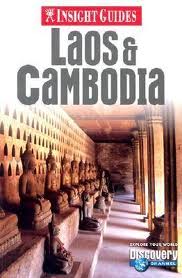 We had “The Insight Guide to Cambodia and Laos” (ed 2006) with us, excellent background information, history, etc., and a good description of the tourist highlights.
We had “The Insight Guide to Cambodia and Laos” (ed 2006) with us, excellent background information, history, etc., and a good description of the tourist highlights.
We also carried “The Lonely Planet for Vietnam, Cambodia, Laos and the Greater Mekong” (ed 2009), for the most up to date and for the more practical information. Problem with the LP is that, once a place – hotel or restaurant – appears in it, the entire travel community, not just the backpackers, seem to descent on it, which creates a distinctly un-authethic atmosphere. Another problem is that many of these places may have been good when they were researched, perhaps 3-4 years ago, but may not be top of the range anymore. In any case, with Wifi in each and every hotel and guesthouse, and various bookings sites with reviews of hotels, you can now much more easily identify where you want to stay, and book online. Maybe LP is getting less useful, these days. It is still good for ideas, though, they seem to have traveled the countries they write about well.
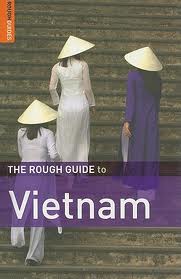 In Vietnam we used “The Rough Guide to Vietnam” (ed 2009), more detailed than the Lonely Planet, but at times perhaps too detailed: they do find rather a lot of so-called worthwhile sites to visit, but many of them are mediocre, at best (although at times the authors admit this, to be fair). Maps aren’t as good, neither as user-friendly, as the Lonely Planet ones.
In Vietnam we used “The Rough Guide to Vietnam” (ed 2009), more detailed than the Lonely Planet, but at times perhaps too detailed: they do find rather a lot of so-called worthwhile sites to visit, but many of them are mediocre, at best (although at times the authors admit this, to be fair). Maps aren’t as good, neither as user-friendly, as the Lonely Planet ones.
We also have “The Compact Insight Guide to Vietnam”, too compact to be of any use, really.
